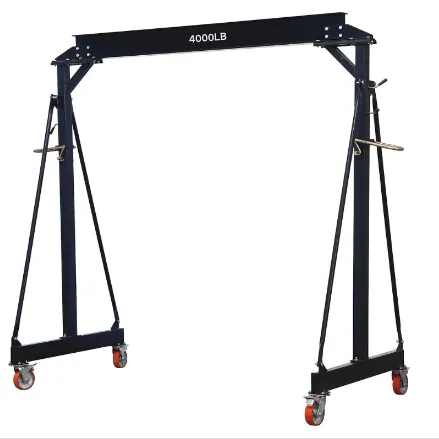Cost Comparison for Magnetic Lifters in the Market Today
Understanding the Price Dynamics of Magnetic Lifters
Magnetic lifters have emerged as crucial tools in various industries, particularly in manufacturing, construction, and logistics. Their ability to lift heavy metals with ease and efficiency makes them an invaluable asset. However, individuals and companies interested in investing in magnetic lifters often find themselves wondering about the factors that influence their prices. In this article, we will explore the various elements affecting the cost of magnetic lifters, providing a comprehensive understanding of their price dynamics.
What Are Magnetic Lifters?
Magnetic lifters are devices that use magnetic force to lift and transport heavy ferromagnetic materials. They contain powerful permanent magnets that can be turned on or off using a simple lever mechanism. This feature allows for quick attachment and detachment, making them ideal for factories and warehouses. Their primary use includes lifting steel plates, pipes, and blocks.
Factors Influencing Magnetic Lifter Prices
1. Magnetic Strength and Capacity One of the primary factors impacting the price of magnetic lifters is their lifting capacity. Magnetic lifters can range from a few hundred kilograms to several tons. Higher lifting capacities typically come with a higher price tag due to the additional materials and technology required to produce stronger magnets. When choosing a lifter, it's essential to assess the weight of the materials you intend to lift to find a suitable model.
2. Build Quality and Materials The construction quality and the materials used in manufacturing magnetic lifters significantly affect their price. Lifters made from high-quality alloys and advanced engineering techniques tend to be more expensive. Durability is crucial, as a robust build ensures a longer lifespan and reliability under heavy loads, which may justify higher initial costs.
3. Design and Features Advanced features such as an automatic release mechanism, safety locks, and ergonomic designs contribute to the overall cost of magnetic lifters. Models equipped with innovative designs that ease operations, improve safety, or enhance efficiency tend to command higher prices. Buyers should consider these features based on their specific applications and safety requirements.
magnetic lifter price

4. Brand and Manufacturer Reputation The reputation of the brand or manufacturer also plays a vital role in pricing. Established companies that have built a reputation for quality and reliability typically charge more for their products. Investing in a reputable brand may provide peace of mind and assurance of product quality, possibly saving costs related to maintenance and replacements in the long run.
5. Market Demand Like any other product, the supply and demand dynamics significantly influence magnetic lifters' prices. During times of increased industrial activity, demand may outstrip supply, driving prices up. Conversely, during economic slowdowns, companies may reduce their investment in manufacturing equipment, leading to lower prices.
6. Technological Advancements As technology advances, new features and manufacturing methods emerge that can affect prices. Magnetic lifters incorporating the latest technology, such as remote control operation or enhanced magnetic circuits, may have a higher price point. However, these advancements can lead to improved efficiency and safety, which can provide a return on investment.
7. Shipping and Distribution The geographical location of buyers can also impact the overall cost of magnetic lifters. Shipping expenses, import duties, and distribution costs can add to the final price. Additionally, domestic manufacturers may offer competitive prices compared to international brands, considering shipping and handling fees.
Conclusion
When considering the purchase of a magnetic lifter, it is essential to understand the various factors that contribute to its price. While higher prices often correlate with better quality, advanced features, and greater lifting capacity, it is crucial to align your purchase with your specific needs and budget. Investing in a magnetic lifter is not merely about the upfront cost; it also involves considerations of safety, efficiency, and long-term performance.
By taking into account all the aforementioned factors—lifting capacity, materials, design features, brand reputation, market dynamics, technological advancements, and shipping costs—buyers can make informed decisions that will ultimately lead to successful lifting solutions for their respective operations. Whether you are a small workshop or a large industrial facility, the right magnetic lifter can significantly enhance productivity and safety in your operations.
-
Unlock Seamless Relocation with Our Heavy Equipment Moving ExpertiseNewsJun.06,2025
-
Unleash Unrivaled Flexibility with Our Adjustable Gantry CraneNewsJun.06,2025
-
Unleash Heavy-Duty Efficiency with Our Industrial Gantry Crane SolutionsNewsJun.06,2025
-
Revolutionize Steel Handling with Our Magnetic Lifter RangeNewsJun.06,2025
-
Master Equipment Mobility with Premium Machinery Mover SolutionsNewsJun.06,2025
-
Elevate Your Material Handling with Magnetic Lifter TechnologyNewsJun.06,2025
-
YS Permanent Lifting Magnets: The Smarter Way to Handle SteelNewsMay.22,2025
